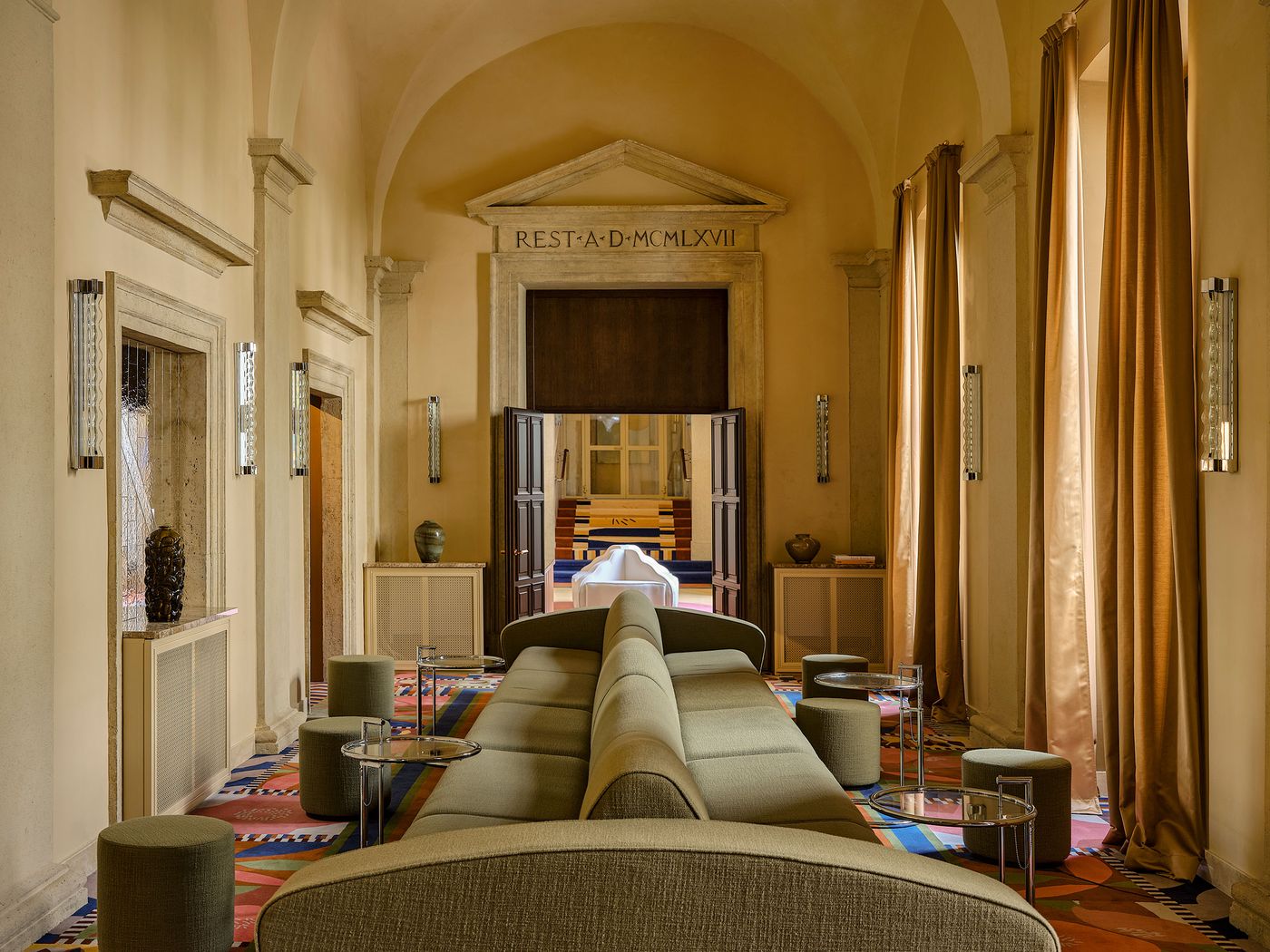
Palazzo Talìa: A Boutique Hotel Boldly Channels Rome's Timeless Allure with Cinematic Flair
Words by Eric David
Location
Rome, Italy
Palazzo Talìa: A Boutique Hotel Boldly Channels Rome's Timeless Allure with Cinematic Flair
Words by Eric David
Rome, Italy
Rome, Italy
Location
Rome has no shortage of historic palazzos where visitors can explore the city’s artistic and cultural heritage. Once the grand homes of nobility, many have been turned into museums or galleries, while others that remain private residences offer guided tours. Some have even been transformed into hotels, inviting guests to immerse themselves in Rome’s storied past while experiencing its timeless allure. To meaningfully achieve this, it is imperative that they seamlessly straddle heritage and modernity—a delicate balancing act that few manage successfully. The 26-room Palazzo Talìa is one of them.

Photography by Giulio Ghirardi.
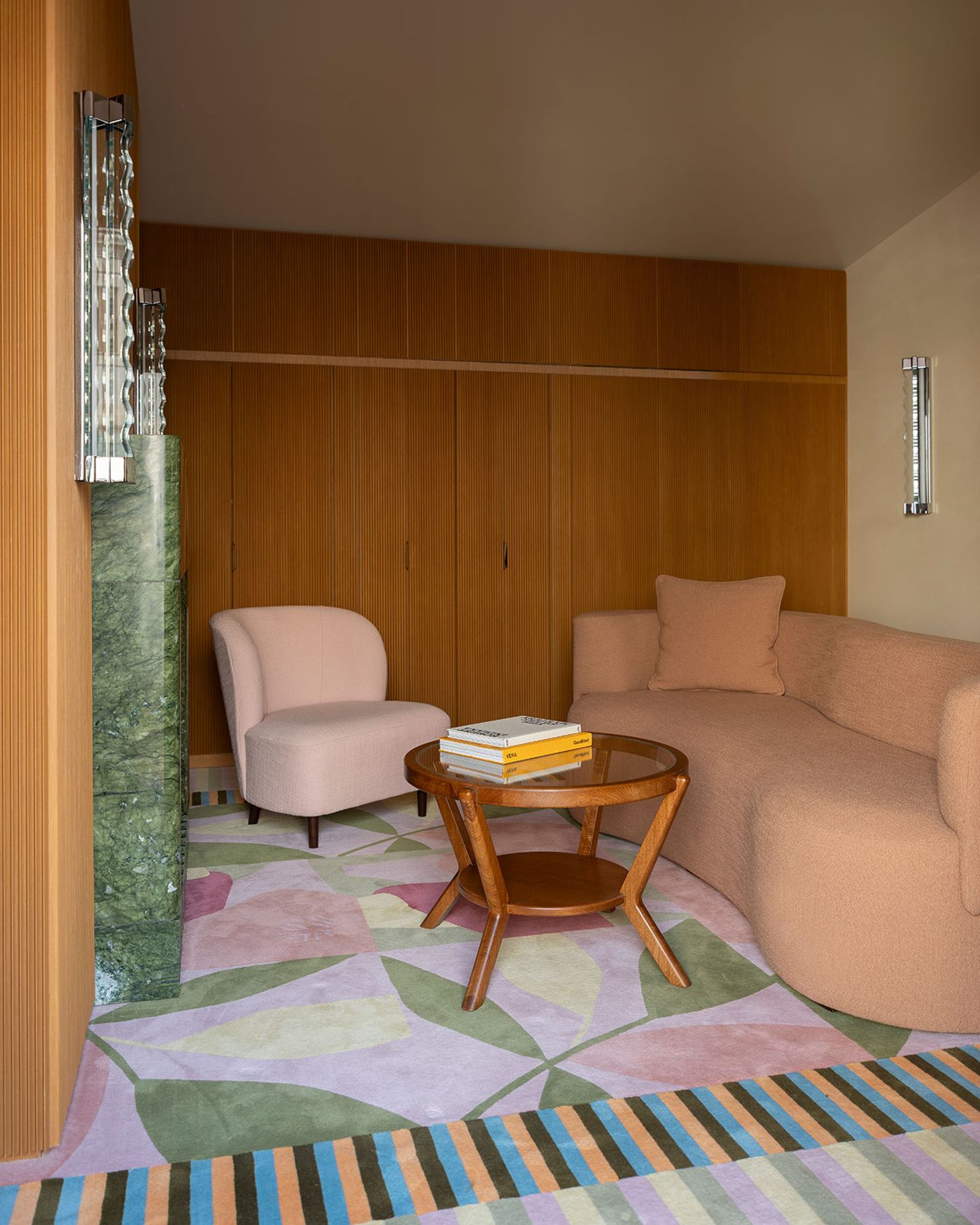
Terrace Suite. Photography by Giulio Ghirardi.
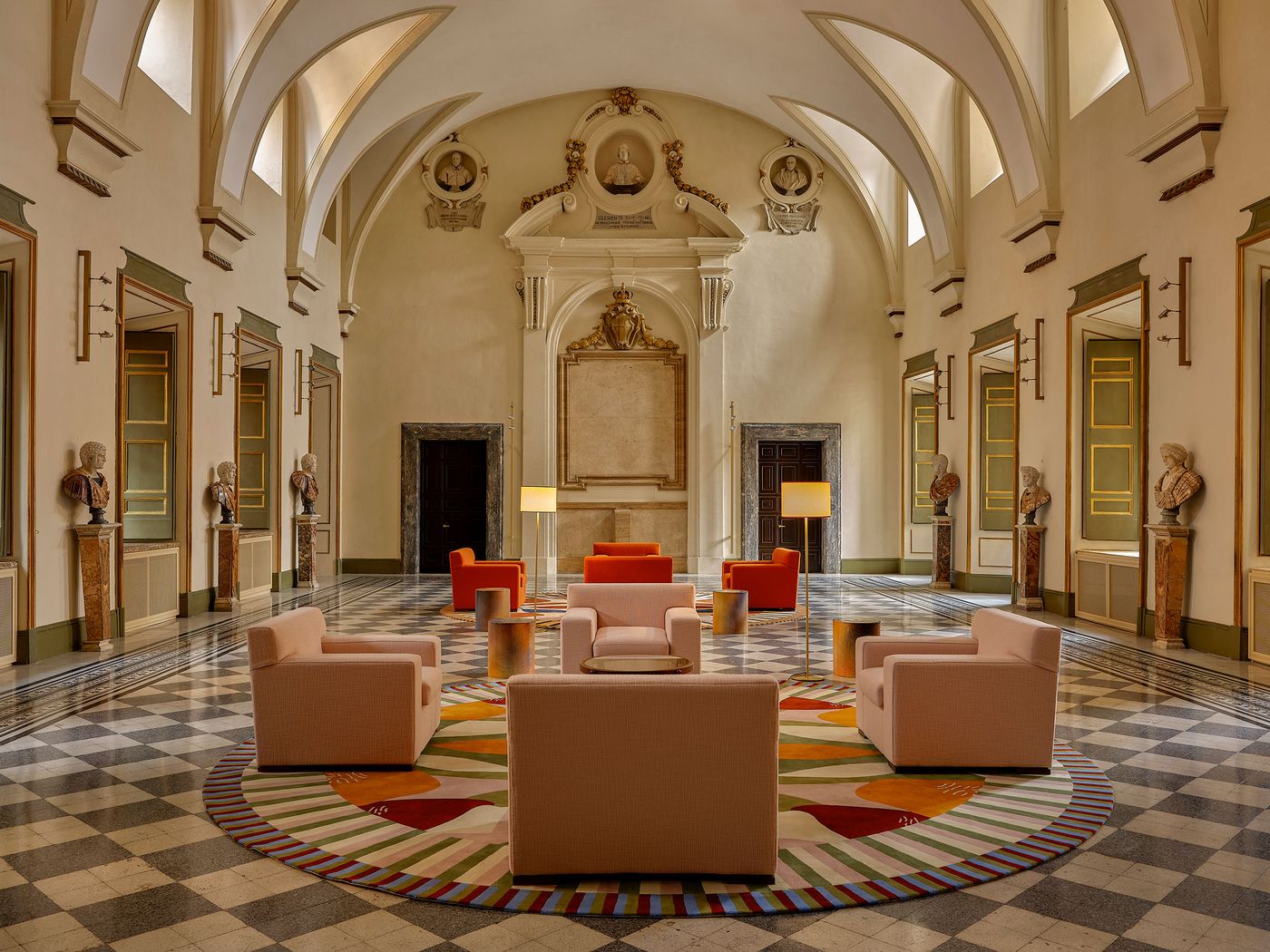
Magna Hall. Photography by Giulio Ghirardi.
Meticulously restored under the stewardship of the Federici family, this sixteenth-century palazzo showcases an extraordinary confluence of design talent. Acclaimed film director Luca Guadagnino has lent its artistic flair to the hotel’s common areas, restaurant, and bar through his eponymous design studio, crafting spaces that merge Baroque grandeur with contemporary sophistication, while architects Marianna Lubrano Lavadera of Mia Home Design Gallery and Laura Feroldi, have infused the guestrooms and suites with a harmonious blend of bespoke craftsmanship and modern elegance. The result is a boutique hotel that doesn’t just preserve history but elevates it, transforming a centuries-old residence into a vibrant, living monument to design and culture.
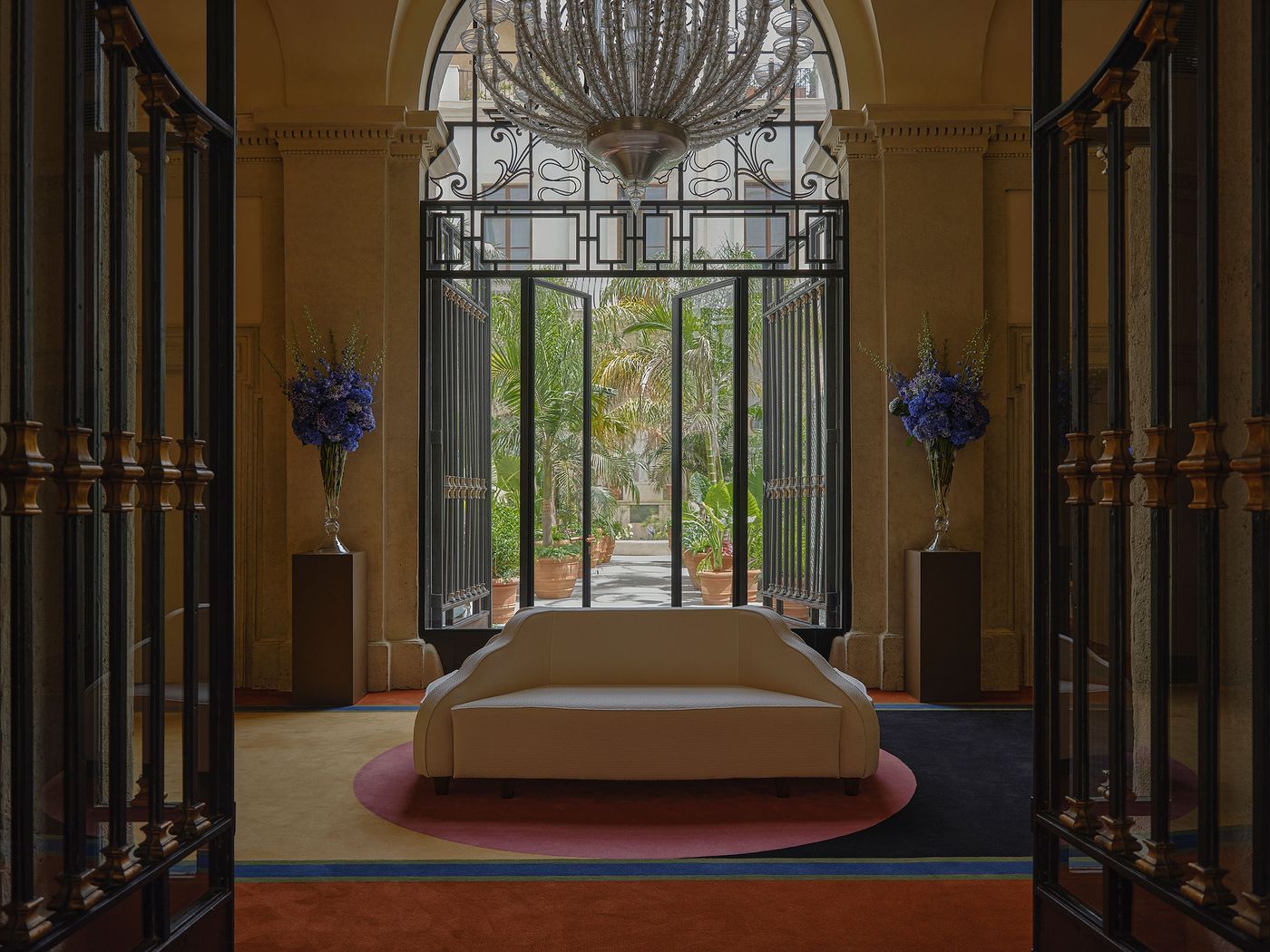
Photography by Giulio Ghirardi.
Built in the 16th century, Palazzo Talìa has borne witness to a rich tapestry of narratives. Once the residence of papal secretaries and cardinals, it later served as an esteemed school whose alumni included diplomats, politicians, and iconic Italian actors Cristian de Sica and Carlo Verdone. When the school closed its doors in 1999, the building's fate hung in the balance until the Federici family, renowned Roman industrialists with a deep passion for the arts, stepped in. What followed was an ambitious, three-year restoration launched in 2021 guided by the vision of merging heritage with contemporary aesthetics. “Palazzo Talìa is about more than luxury; it’s about storytelling,” says Elia Federici, the driving force behind the project. The name Talìa, derived from the Ancient Greek Muse of comedy and idyllic poetry, symbolizes the flourishing of art and culture—a spirit that is palpable in every corner of the hotel.
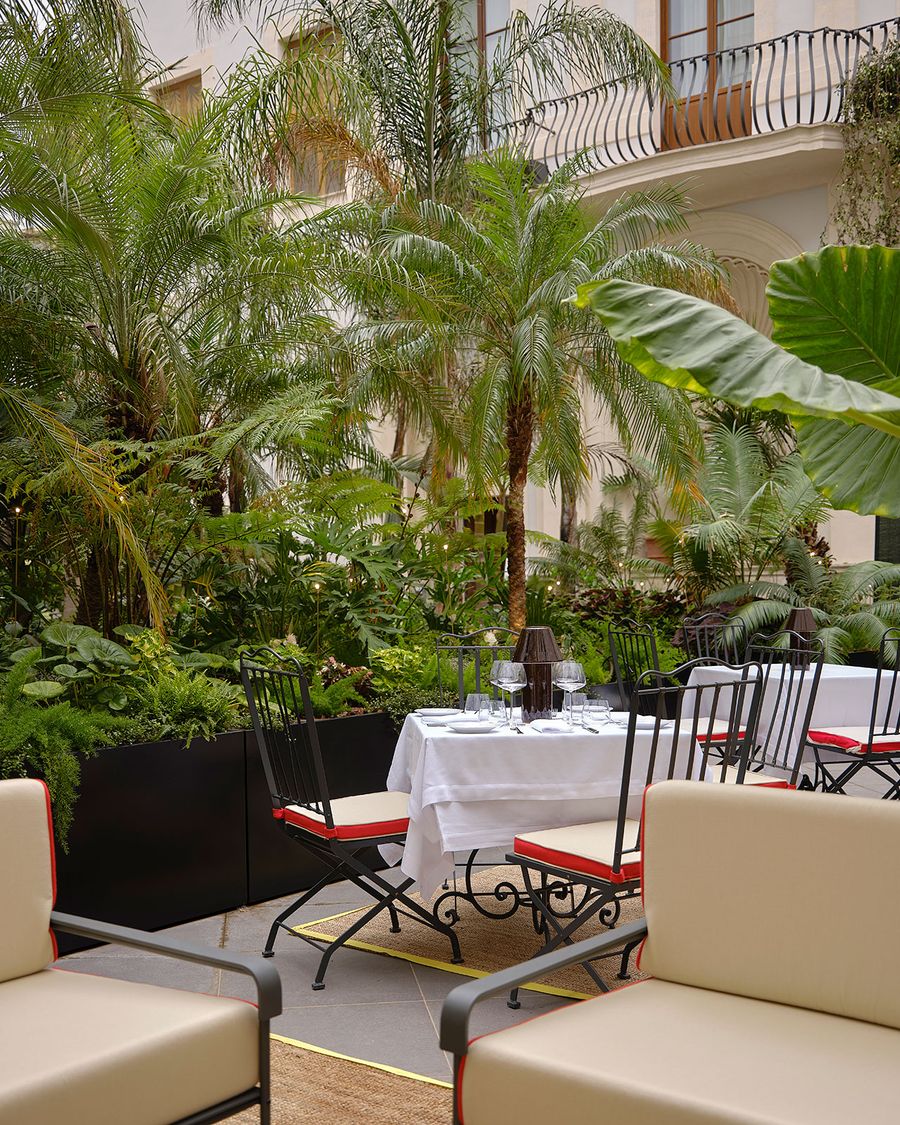
Photography by Giulio Ghirardi.
The hotel’s common areas showcase a bold interplay of historical and modern elements. Studio Luca Guadagnino’s approach was reverent yet innovative, preserving the architectural splendour while injecting a cinematic flair, a hallmark of its creative ethos. The use of luxurious materials such as marble, precious woods, and mouth-blown mirrors harmoniously complement the palazzo’s Baroque architecture, while pops of vibrant colour inject playful accents. “The project was about striking a balance,” notes project manager Pablo Molezún. “Every detail had to honour the past while embracing the innovations of the present.” Much of the furniture, including sofas and chairs, have been custom-designed by the Studio, enhancing the scheme’s whimsical flair. Others are archival pieces sourced for the hotel, such as the monumental Murano-glass chandelier hanging in the entrance, which was created by Napoleone Martinuzzi in the 1940s.

Photography by Giulio Ghirardi.
One of the standout pieces commissioned specifically for Palazzo Talìa is a monumental carpet by Irish artist Nigel Peake and Roman rugmaker Chi Design that guides guests across the palazzo’s hallways. Featuring floral and geometric patterns, it combines soft shades like pink and buttermilk with more intense hues like dark blue and burnt orange, inspired by the palazzo’s restored frescoes including those by 18th century painter Gaspare Serenario in the Magna Hall, a resplendent space on the first floor with a soaring 11-metre-high ceiling, chequered floor and ancient Roman busts lining the walls that can be used for private events.

Photography by Giulio Ghirardi.
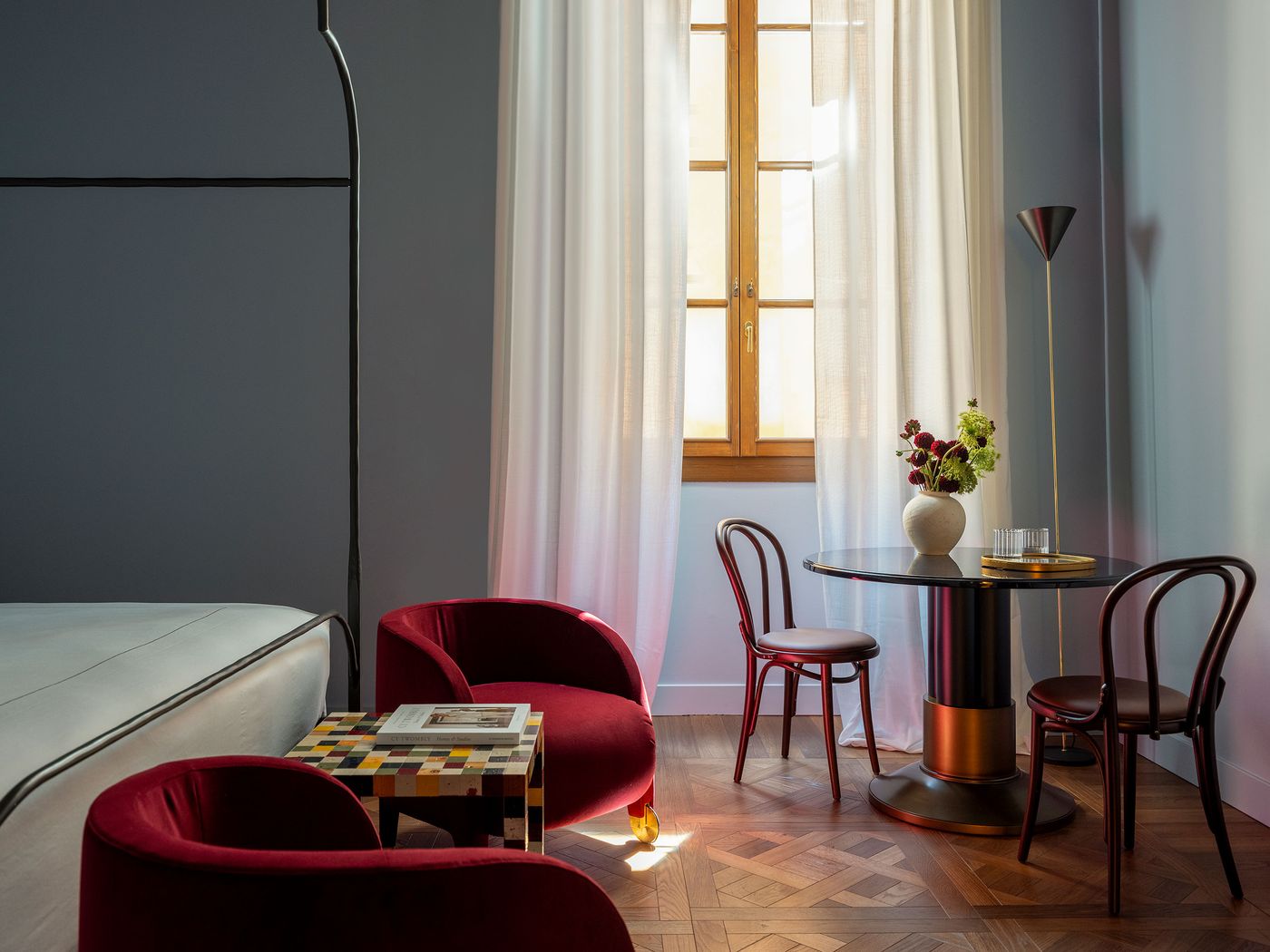
Photography by Giulio Ghirardi.

Photography by Giulio Ghirardi.
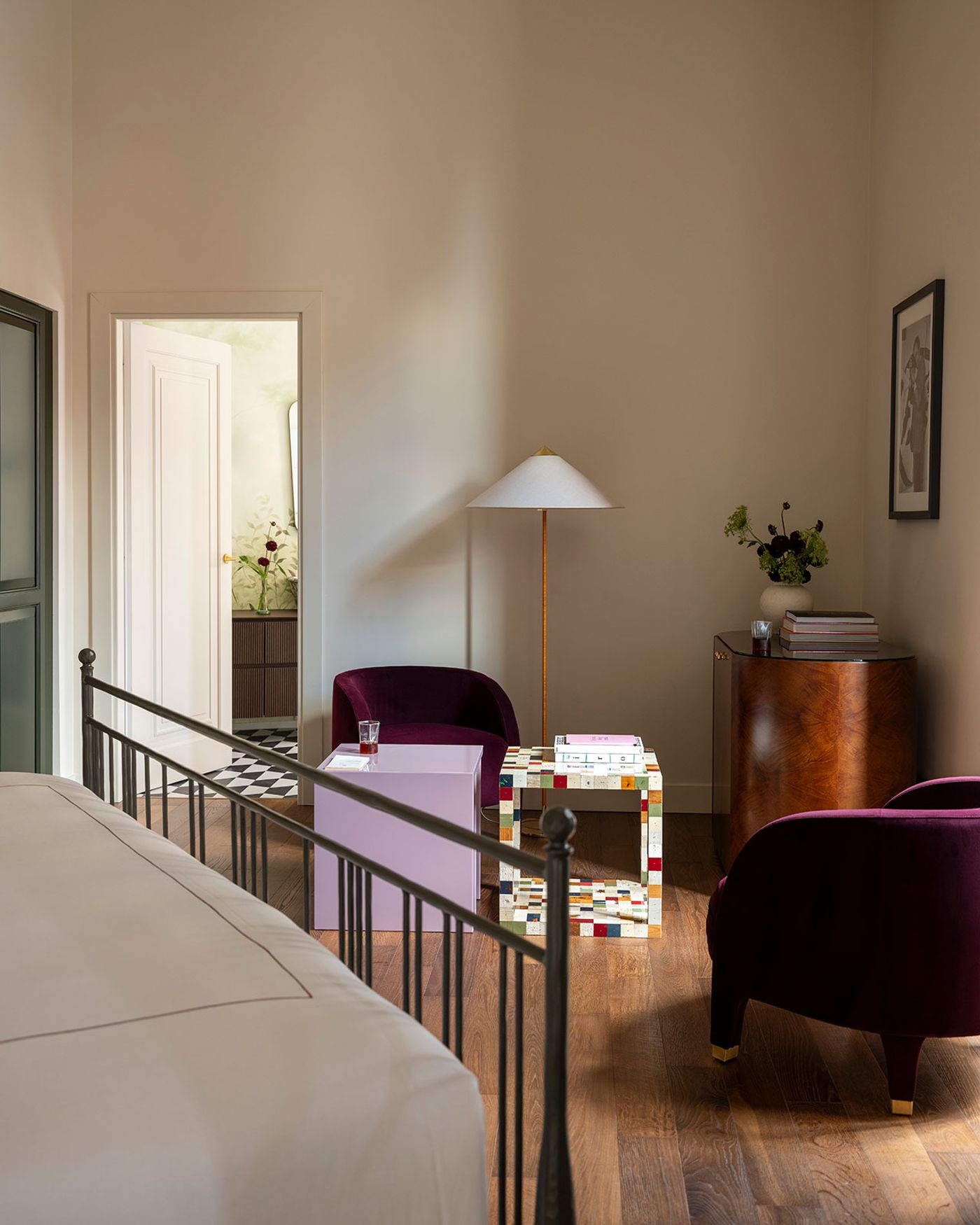
Photography by Giulio Ghirardi.
The 25 rooms and suites by Marianna Lubrano Lavadera and Laura Feroldi, who also designed the bespoke carpets in the corridors, echo Studio Luca Guadagnino’s artful blend of past and present. Modern four-poster beds, ottomans in pink and mauve hues, and colourful bathroom tiles, all custom-designed for the hotel, create spaces that are both contemporary and steeped in history. Each room is further elevated by carefully curated details such as sconces made of handmade blown glass, striped brown-and-ivory wardrobes, and photographs from the Federici family’s contemporary collection. At the pinnacle of this design ethos lies the Guadagnino-designed Terrace Suite on the palazzo’s top floor, where wood-panelled walls, bespoke rugs, and a green marble-lined fireplace converge in a harmonious display of luxury, crowned by its pièce de résistance: a private terrace overlooking the timeless Roman skyline.
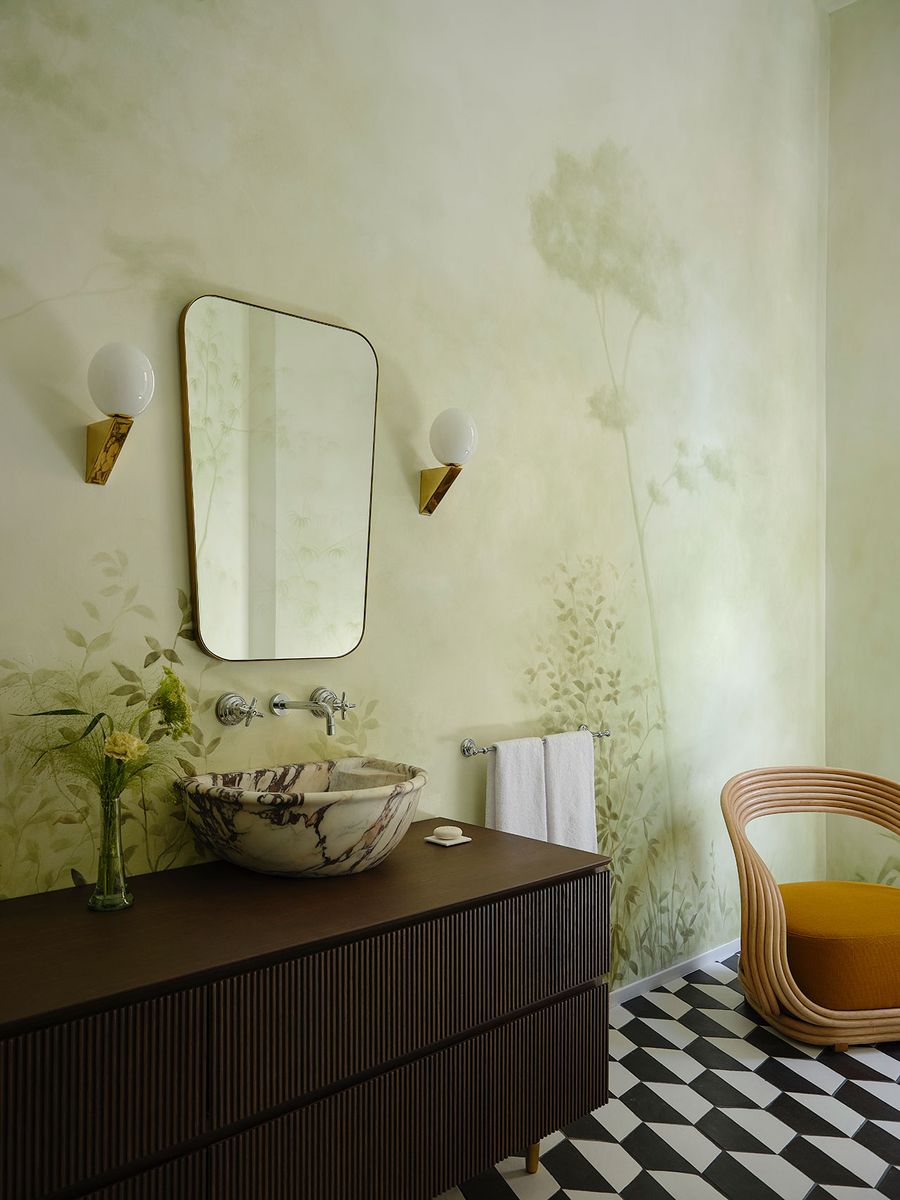
Photography by Giulio Ghirardi.
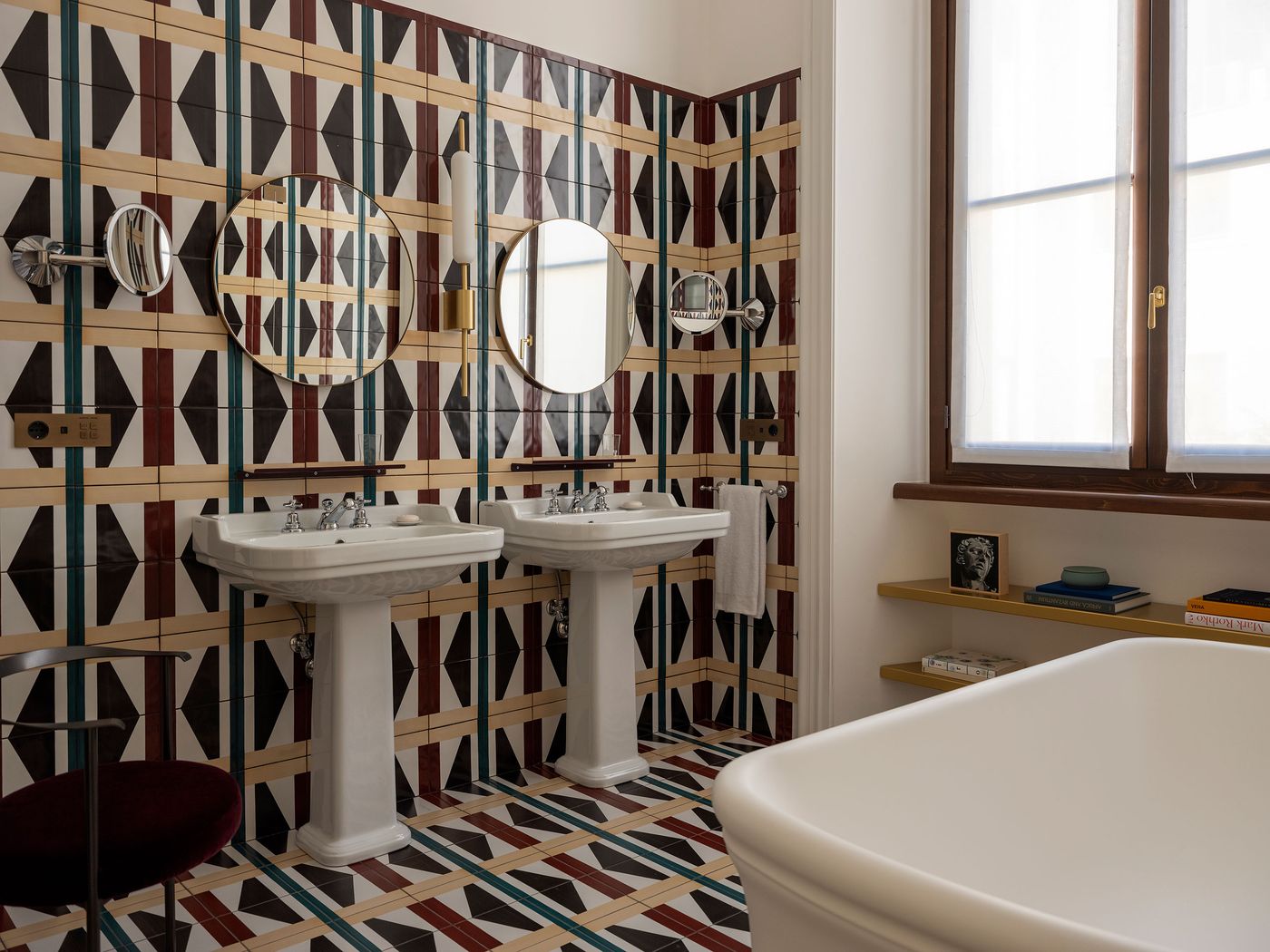
Photography by Giulio Ghirardi.
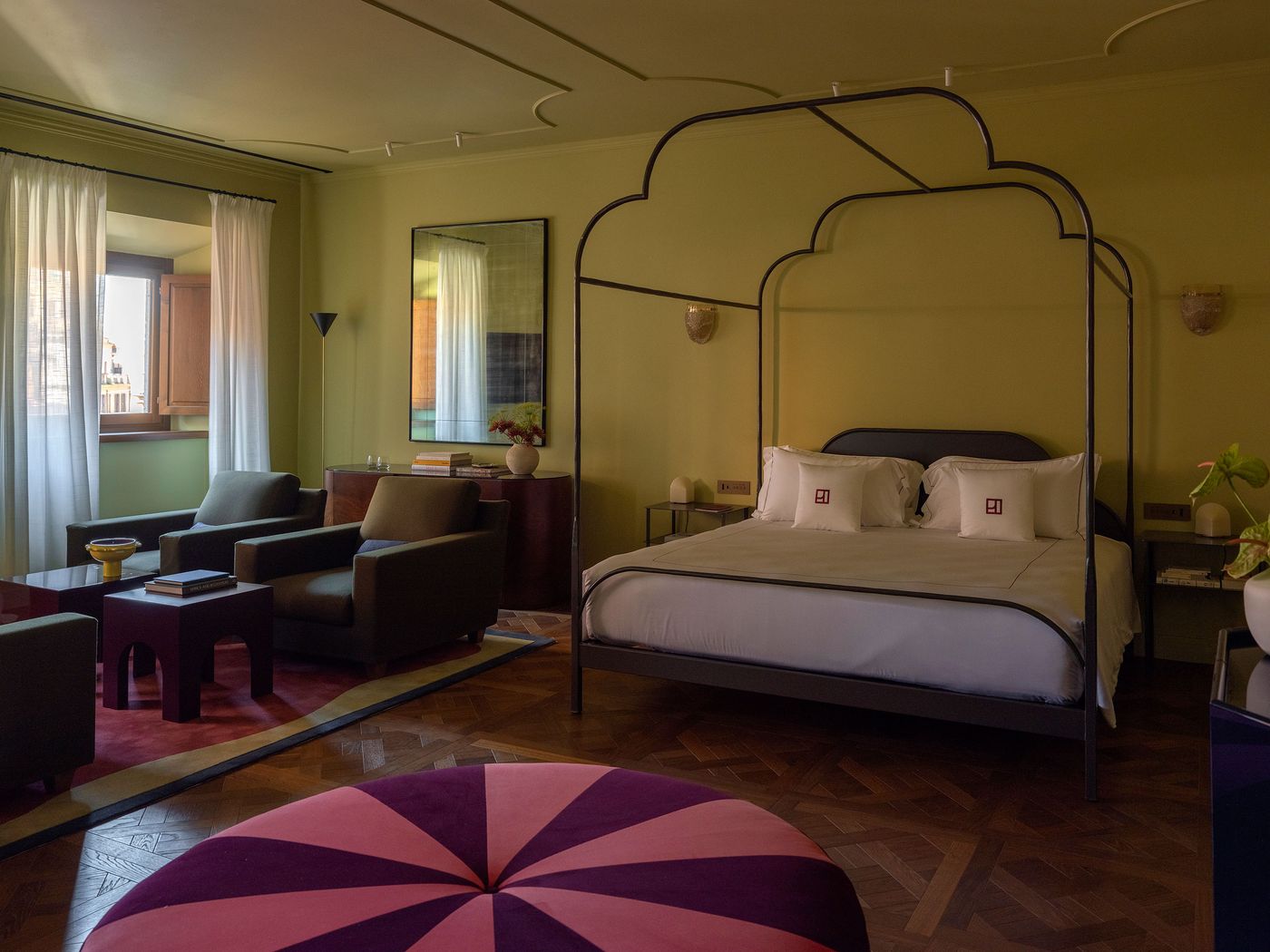
Photography by Giulio Ghirardi.
Tramae, the hotel’s restaurant, is a French bistro with a distinctly Roman sensibility, where Executive Chef Marco Coppola invites diners on a culinary Grand Tour of Italy. Blending regional flavours with seasonal ingredients, the menu celebrates tradition and innovation in equal measure. The design of the space is more subdued in colour than the vibrant common areas, but no less captivating. A bronze and copper coffered ceiling, walls clad in Murano glass mirrors, and decorative stucco portals by Mauro Peverada create an atmosphere of understated elegance.

Tramae restaurant. Photography by Giulio Ghirardi.
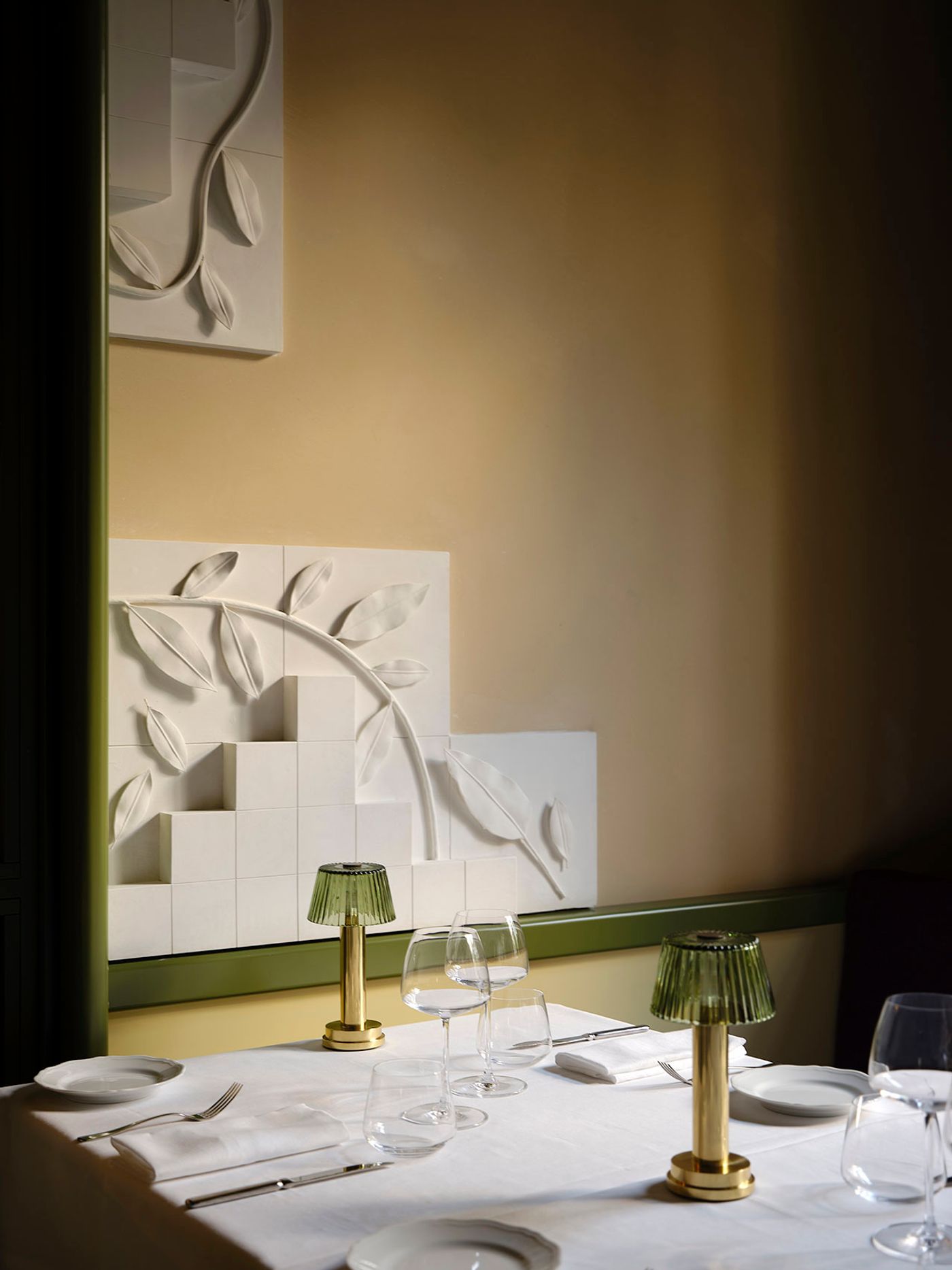
Tramae restaurant. Photography by Giulio Ghirardi.

Photography by Giulio Ghirardi.
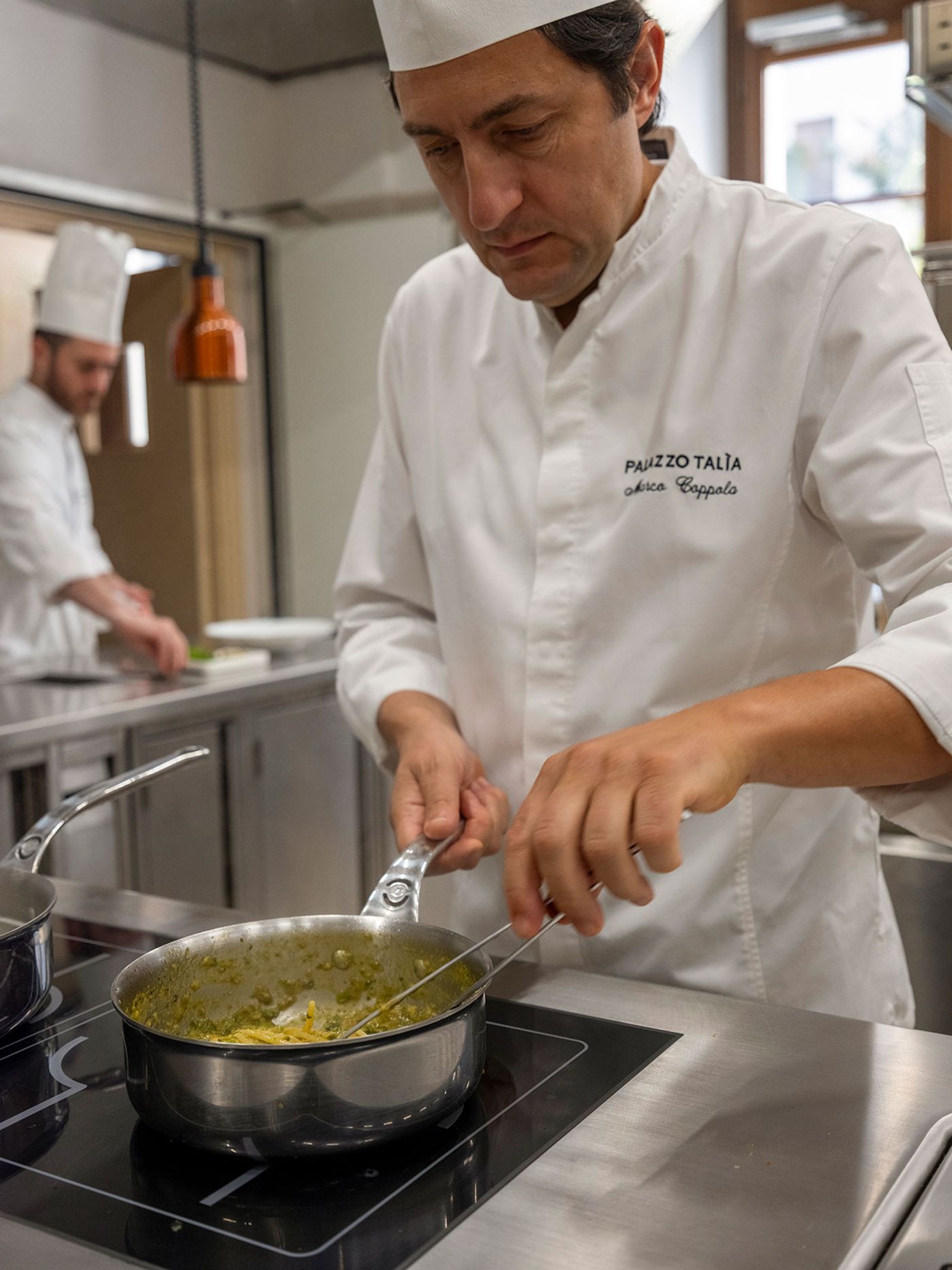
Chef Marco Coppola. Photography by Giulio Ghirardi.

Tramae restaurant. Photography by Giulio Ghirardi.
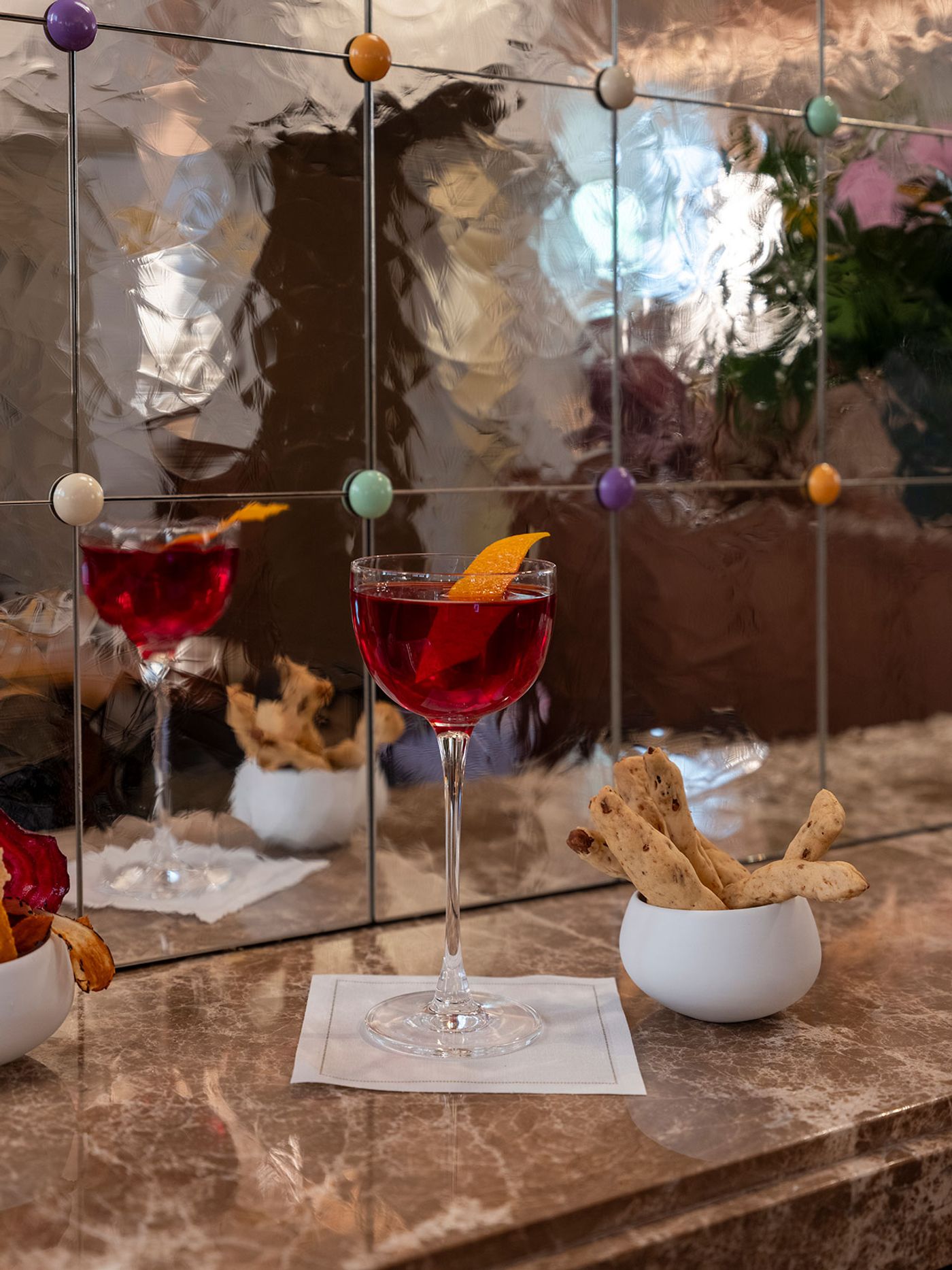
Photography by Giulio Ghirardi.
For a more intimate escape, the Bar della Musa offers an atmosphere of refined seclusion. Its silver-tiled bar counter serves as a shimmering backdrop, enchantingly reflecting the historic frescoed ceilings above. Glazed lava-stone tables by Rosario Parrinello enhance the bar’s sophisticated allure, as do its signature cocktails inspired by the Muses—including the raspberry-infused Clio, the zesty Calliope, and the sage-and-pistachio-flavoured Melpomene.
A lush terrace nestled within the palazzo’s inner courtyard serves as both a bar lounge and an outdoor dining area, offering a serene oasis amid the city’s lively bustle.
This tranquil retreat perfectly encapsulates Palazzo Talìa’s essence—a sanctuary that is as vibrant and multifaceted as the eternal city it calls home.

Bar della Musa. Photography by Giulio Ghirardi.

Bar della Musa. Photography by Giulio Ghirardi.